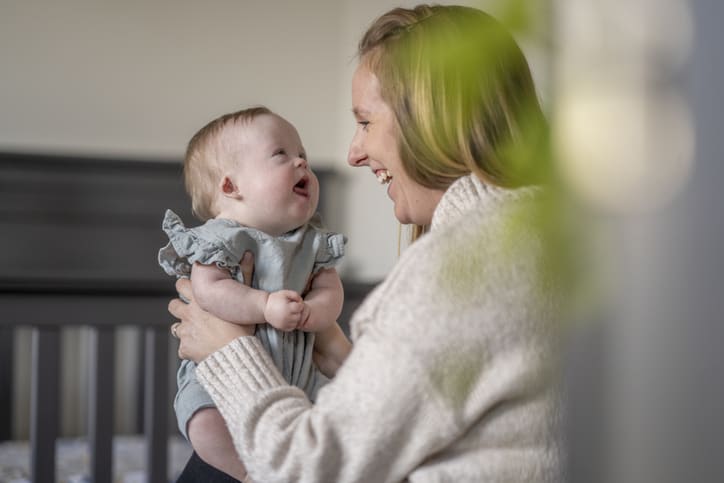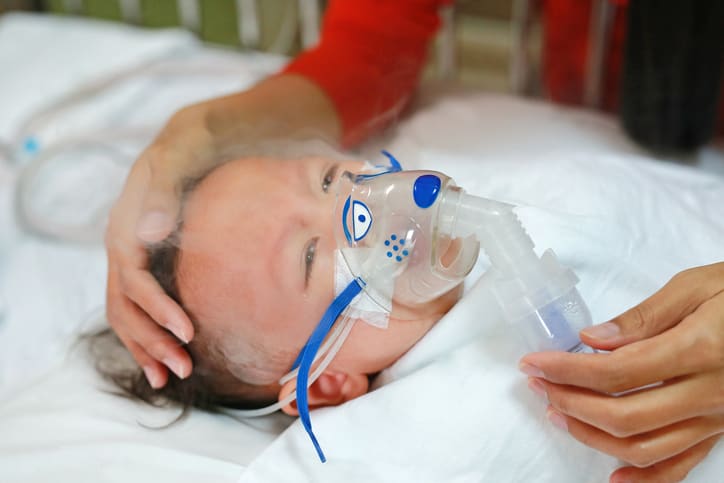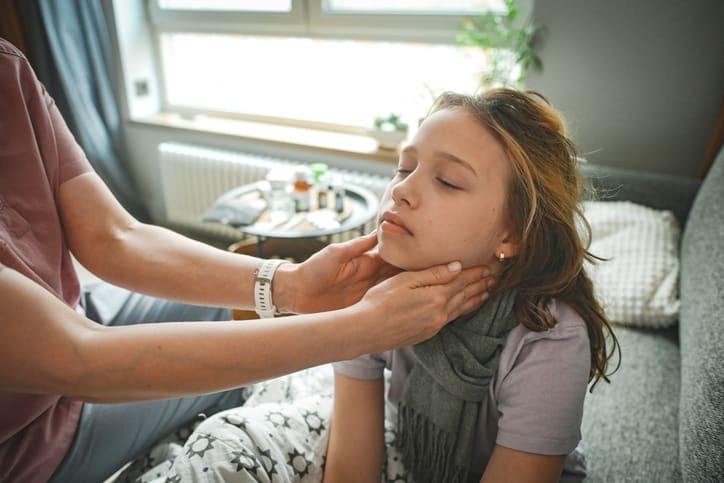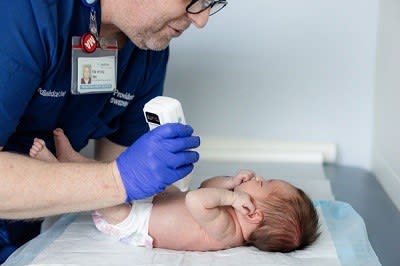New research reveals an increase in sleep-related sudden infant death

[5 min read]
In this article:
- SIDS, a type of as SUID, is the sudden, unexpected death of an infant younger than one year old. It's sometimes referred to as crib death.
- It's the number one cause of death for infants between one and 12 months old.
- In 2022, there were about 3,700 sudden unexpected infant deaths in the United States.
- A Providence Swedish pediatrics expert discusses recent research showing an increase in SIDS and offers guidance on safe sleep practices to help protect your baby.
A new study published recently in the medical journal JAMA Pediatrics revealed a concerning increase in the United States in the incidence of sleep-related infant deaths, broadly known as Sudden Unexpected Infant Death (SUID). SUID includes Sudden Infant Death Syndrome (SIDS), a syndrome in which there is no clearly identifiable medical or environmental cause in the death of a child under one year of age.
According to the research, sudden infant death increased by 12% in the United States between 2020 and 2022. Though overall infant mortality rates dropped by 24% during essentially the same period, SUID/SIDS deaths remained higher among Black, Native, and Pacific Islander infants.
To help us understand more about sleep-related deaths among infants and safe sleep for babies, we spoke with Elizabeth Meade, M.D., FAAP, IBCLC, who is a Providence Swedish pediatric medical director and a mom.
This new study identifies a concerning increase in sleep-related infant deaths nationally. Do parents need to be concerned?
In the world of child health, we certainly find this new study showing increased rates of SUID to be very concerning. While we are hopeful it's a temporary increase potentially linked to multiple factors (the COVID pandemic as one example), there are also reasons to be worried that it reflects a continuing trend.
For example, rates of opioid use in our population continues to increase, and this is a risk factor for young children in the home. We have also seen a significant increase in the content on social media promoting infant sleep practices that we know to be unsafe.
One of the most effective things parents can do to prevent SIDS—in addition to placing their baby on their back to sleep in a safe space—is not smoking. Secondhand smoke is one of the biggest risk factors for SIDS, and avoiding smoking represents a big opportunity to decrease that risk.
Making sure they have a safe sleep environment is the number one thing to do. We should always put babies on their back to sleep; once infants can roll on their own, we don't need to keep flipping them back, but it's our job to make sure we place them on their back. Parents should stop swaddling by the time the baby is eight weeks old, or immediately if a baby shows signs of rolling sooner than that. If we notice that a sleeping baby is having an altered breathing pattern, color change, abnormal movements, vomits, or does anything concerning, we should assess them right away and seek medical attention if necessary.
We practice safe sleep with our infant, avoiding loose bedding, toys, etc. Are there supports, pillows or alarms that can help keep our baby even safer?
I wish there were! If there were products with evidence to support improved outcomes, the American Academy of Pediatrics and every pediatrician would be shouting it from the rooftops. At this time, there are no sleep products that have been shown to have any impact on increasing sleep safety - but there are several that can be dangerous.
For example, we have seen a big rise in weighted sleep products like sleep sacks - these weighted products are never safe for infants and should not be used. We also see lots of promotion of things like swings, pillow nests, etc., that are not safe for sleep—ever. The most important thing parents can do is to ensure a safe sleep environment in which the baby sleeps alone in an age-appropriate bassinet or crib, ideally in the same room with parents or caregivers, placed on their back to sleep, and with no loose bedding, blankets, stuffed animals, crib bumpers, etc., present.
For most infants, products marketed to alert parents to changes in breathing or oxygenation have not been shown to be effective in revealing or preventing health problems, nor in picking up real problems if they do occur. They may also create a false sense of security if the parent feels the baby is having difficulty, but the alarm is not going off. While a premature infant, a baby who is on oxygen at home, or one with a known heart problem might be prescribed a medical-grade home monitor, those that are available for over-the-counter purchase have not been shown to work for the general population.
We are seeing higher rates of SIDS/SUID among non-white parents. What do we need to know about this?
As with many things in health care, we see a disparity in health outcomes that disproportionately impacts patients who are Black, Native American, and Pacific Islander. There are many factors involved in this, but ultimately it is reflective of the impact of systemic racism on health outcomes in general.
Are there factors I should keep an eye out for when putting my baby to sleep or while they are sleeping?
Making sure they have a safe sleep environment is the number one thing to do. We should always put babies on their back to sleep; once infants can roll on their own, we don't need to keep flipping them back, but it's our job to make sure we place them on their back. Parents should stop swaddling by the time the baby is eight weeks old, or immediately if a baby shows signs of rolling sooner than that. If we notice that a sleeping baby is having an altered breathing pattern, color change, abnormal movements, vomits, or does anything concerning, we should assess them right away and seek medical attention if necessary.
Should I keep my infant sleeping near me?
Ideally, your baby would sleep in their own sleep space (a bassinet or a crib) but in the same room with you for at least the first six months, especially at night. Practicing naps in the baby's own room can be a great way to get them comfortable so that moving them out of your room is easier when it happens.
My baby is not a sound sleeper, do I need to worry about this?
Babies—especially young babies—are very active sleepers. They make lots of noises, move around, and may even cry out even though they are actually still asleep. Young infants cycle between light and deep sleep frequently, and each cycle may come with some vocalizations. As long as your baby is sleeping the recommended number of hours, at the right time, and seems well-rested, you don't typically need to worry about how deeply it seems they are sleeping.
Should I avoid letting my baby have a pacifier when she is sleeping?
Using pacifiers has been shown to decrease risk of SIDS, especially while the baby is going to sleep and during the first part of the sleep period. Once we know a baby is feeding and gaining weight well (usually after the first couple of weeks), feel free to introduce a pacifier for sleep as another tool to decrease risk.
Is co-sleeping helpful in establishing safe sleep for my little one?
Given the data we have around risk of SUID/SIDS, we cannot recommend that babies bed-share with adults. However, we also know that many families choose to co-sleep. If a parent decides to bedshare with their baby, they should follow certain practices to help decrease risk: not smoking, being sober, breastfeeding, keeping baby lightly dressed in no swaddle and on his or her back, and ensuring a safe sleep surface. This means firm mattress, no heavy blankets, covers or extra pillows, no toys or stuffed animals, no nearby strings or cords, and any gaps firmly filled with rolled baby blankets or towels. Because of the extreme risk—up to 67 times greater—of infant death associated with placing babies to sleep on a couch, armchair, recliner, or other cushioned surface, we strongly recommend against this, whether the baby is alone or with an adult.
If you have questions about vaccinations or your child’s wellness health, Swedish Pediatrics can help. If your kids aren’t up to date on immunizations, particularly the measles vaccine, call their pediatrician today to schedule a visit.
You can contact Swedish Primary Care to schedule an appointment with a primary care physician or advanced care clinician. If you or a child has symptoms, you can connect virtually with a member of your care team who can review the symptoms, provide instruction and follow up as needed. With Swedish ExpressCare Virtual you can receive treatment in minutes for common conditions such as colds, flu, urinary tract infections, and more. If you don’t have a doctor, use our provider directory to find a specialist or primary care physician near you.
Information for patients and visitors
Additional resources
Don't sleep on the importance of a good night's rest for your kiddos
Protect your family from RSV, because it isn't just a cold
Is it strep throat or a sore throat?
Vaccinations help your kids stay healthy now and in the futureThis information is not intended as a substitute for professional medical care. Always follow your healthcare professional's instructions.


